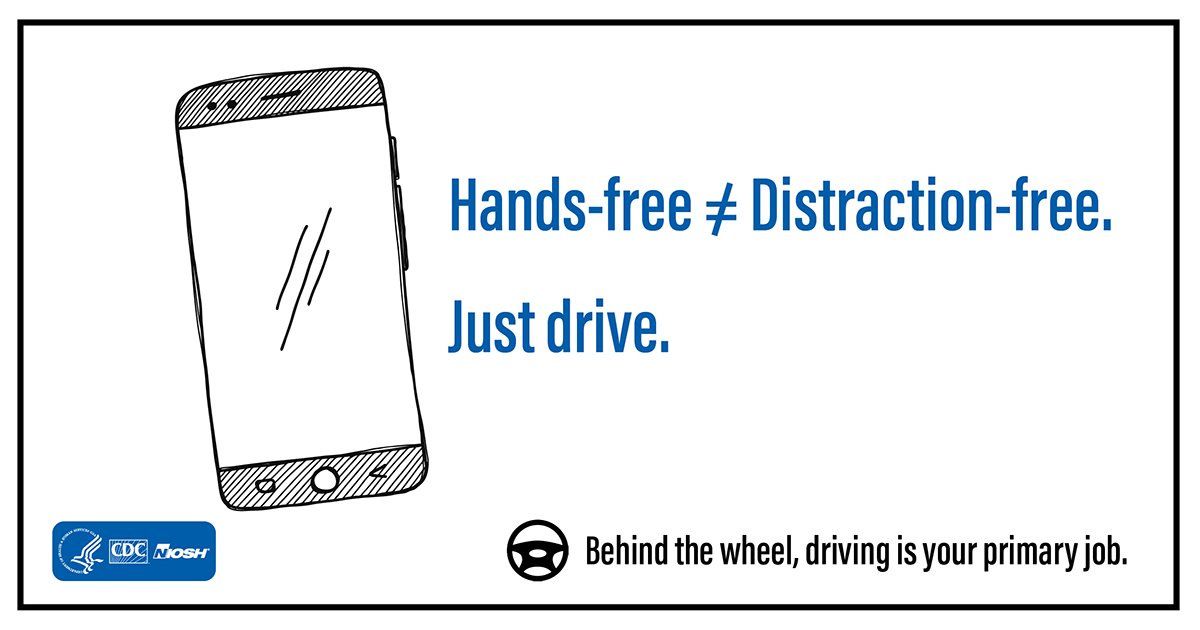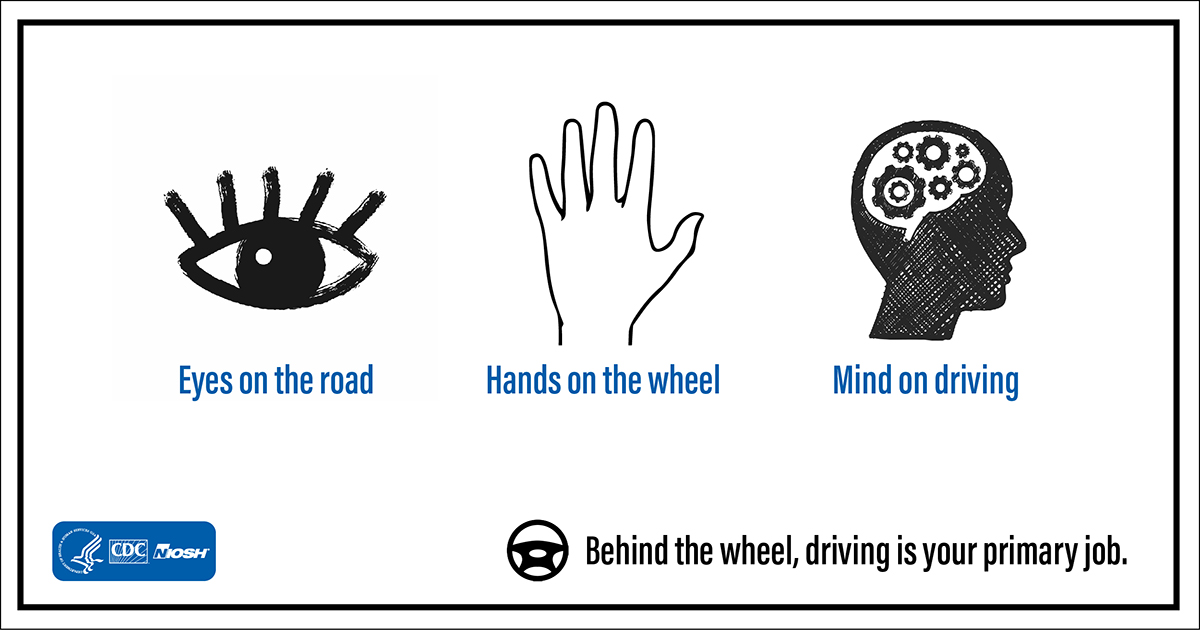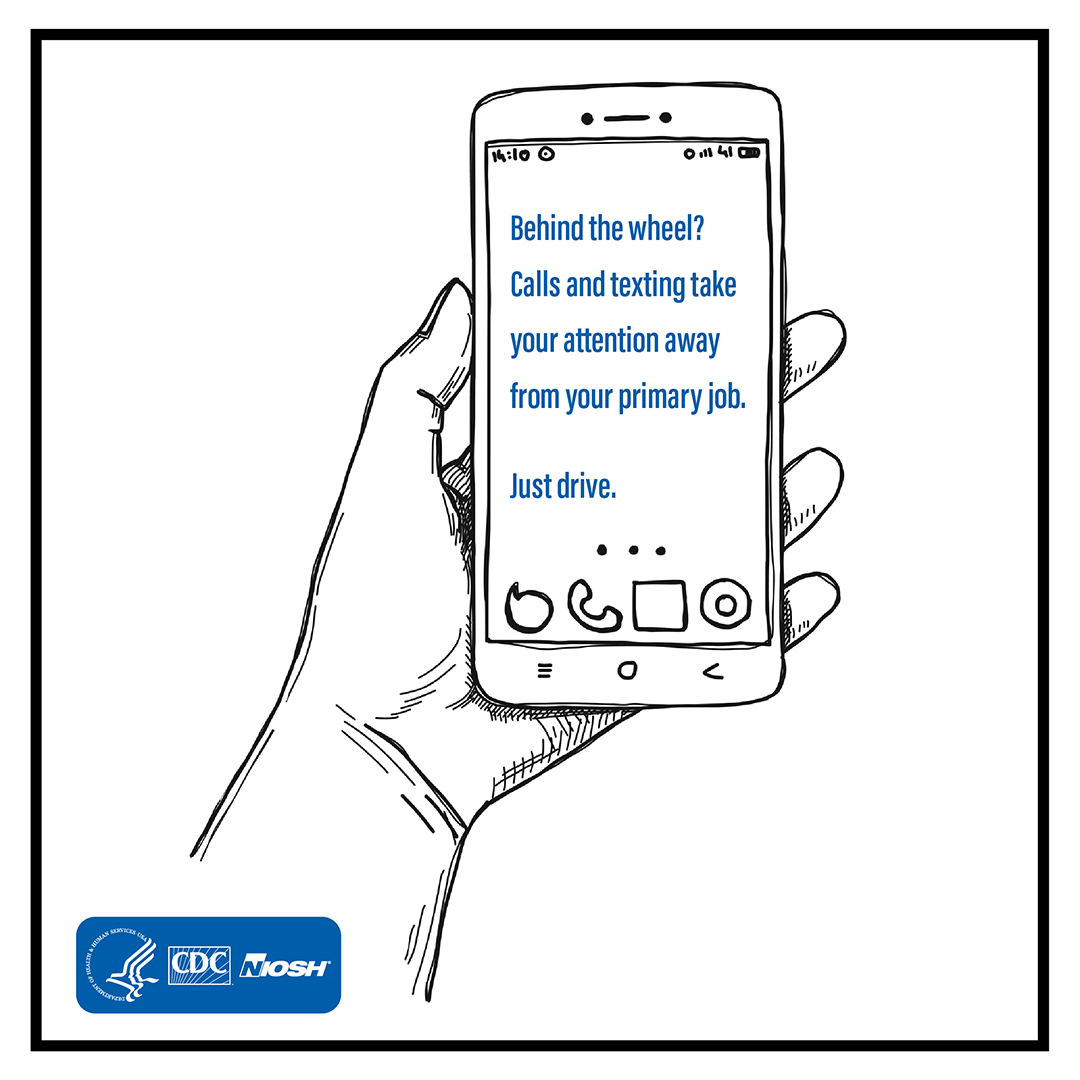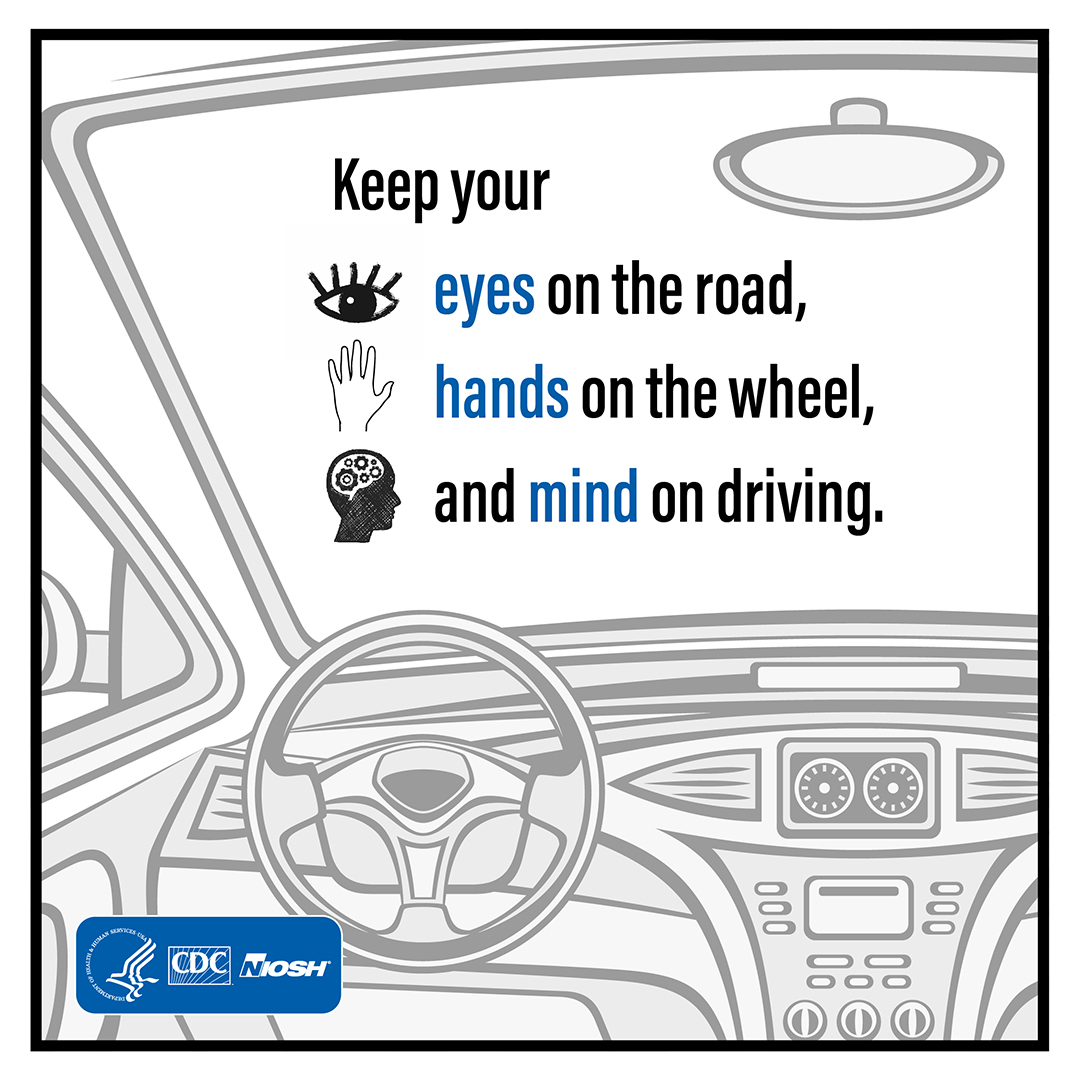Key points
Driving requires our full attention, and distractions get in the way. Three types of distraction affect our ability to drive safely: visual, manual, and cognitive. Employers can take actions to prevent distracted driving among workers.

What it is
Distracted driving occurs any time you take your eyes off the road, hands off the wheel, and mind off your primary task: driving safely. Any non-driving activity you engage in is a potential distraction and increases your risk of being involved in a motor vehicle crash.1
Workers in many industries and occupations spend all or part of their workdays on the road. One study showed that compared with other drivers, those who were at work were more likely to be in a hurry to reach their destination, think about work, be tired, or use a cell phone.2
Types of distractions
- Visual: Reading a text message, looking up directions, rubbernecking (craning one's neck to get a better view) at a crash site, and other distractions that involve taking your eyes off the wheel
- Manual: Reaching for things inside the vehicle, using a handheld device, adjusting the radio, eating or drinking, and other distractions that involve taking your hands off the wheel
- Cognitive: Talking on the phone, arguing with a passenger, thinking about your next appointment, and other distractions that involve taking your mind off driving
More on cognitive distractions
Facts and stats
- Research shows that drivers who use cell phones may be looking at but failing to see up to 50% of the information in their driving environment. 3
- In 2020:4
- 13% of all motor vehicle traffic crashes in the United States involved distraction
- 3,142 people died in crashes involving a distracted driver
- 587 non-occupants (e.g., pedestrians and cyclists) died in a crash that involved a distracted driver
- At any given time in 2020, an estimated 2.8% of all drivers on the road were visibly using a handheld device, representing a slight decrease from 2.9% observed in 2019.5
- Research suggests that distraction is present during 52% of normal driving.6
- On average, a non-fatal injury crash at work that involves distraction costs the employer $100,310.7
Why phones are distracting
Your brain has limited capacity for attention. Research shows that hands-free phones are just as distracting as handheld phones. 3Any non-driving task you perform behind the wheel reduces the attention available to you for detecting and reacting to potential road dangers. The less attention you give to driving, the greater the chance you will be involved in a crash. A worker who is driving while negotiating a business deal over the phone is giving neither task the attention it deserves.
What employers can do
Use the following recommendations to prevent distracted driving on the job.89
- Ban all phone use (texting, handheld, hands-free) while driving a company vehicle, and ban use of company-issued phones while driving a personal vehicle.
- Require workers to pull over in a safe location to look up directions, text, or to make or receive a call.
- Consider using phone-blocking technology to limit workers' cell phone use while driving.
- Consider using technology that detects and warns drivers of distracted driving behaviors (such as cameras that detect when eye gaze is not on the road).
- Prepare workers before implementing these policies by communicating what they need to do to comply and what action you will take if they do not follow policies. Consider having workers acknowledge that they have read and understand these policies.
Federal and state laws
What workers can do
If you drive as part of your job:89
- Do not use your phone while driving.
- Pull over in a safe location to look up directions, text, or to make or receive a call.
- Make necessary adjustments (e.g., adjust controls, program directions) to your car before your drive.
- Do not reach to pick up items from the floor, open the glove box, or try to catch falling objects in the vehicle.
- Avoid emotional conversations with passengers, or pull over in a safe location to continue the conversation. For normal conversation, passengers in the vehicle can often help lower crash risk for adult drivers by keeping them focused on driving.
- Focus on the driving environment — the vehicles around you, pedestrians, cyclists, and objects or events that may mean you need to act quickly to control or stop your vehicle.
Resources
Newsletter
Distracted Driving Behind the Wheel at Work (2020)
Graphics
Use the following graphics to encourage safe driving, on and off the job.




- National Highway Traffic Safety Administration [2013]. Visual-manual NHTSA driver distraction guidelines for in-vehicle electronic devices: notice of federal guidelines. Federal Register 78(81):24818-24890.
- Salminen S, Lähdeniemi E [2002]. Risk factors in work-related traffic. Transportation Research Part F 5(1):77-86.
- National Safety Council [2012]. Understanding the distracted brain. Why driving while using hands-free is risky behavior. Itasca, IL: National Safety Council. White Paper.
- National Highway Traffic Safety Administration [2022]. Distracted driving 2020. Washington, DC: National Highway Traffic Safety Administration.
- National Highway Traffic Safety Administration [2022]. Driver electronic device use in 2020 [https://crashstats.nhtsa.dot.gov/Api/Public/ViewPublication/813184]. Washington, DC: National Highway Traffic Safety Administration.
- Dingus TA, Guo F, Lee S, Antin JF, Perez M, Buchanan-King M, Hankey J [2016]. Driver crash risk factors and prevalence evaluation using naturalistic driving data. Proceedings of the National Academy of Sciences 113(10):2636-2641.
- Network of Employers for Traffic Safety [2022]. Cost of motor vehicle crashes – 2019. Vienna, VA: NETS.
- NIOSH [2015]. Preventing work-related motor vehicle crashes. By Pratt SG, Rodríguez-Acosta RL. Morgantown, WV: US Department of Health and Human Services, Centers for Disease Control and Prevention, National Institute for Occupational Safety and Health, DHHS (NIOSH) Publication No. 2015-111.
- National Safety Council [2019]. Safe Driving Kit [downloadable].
